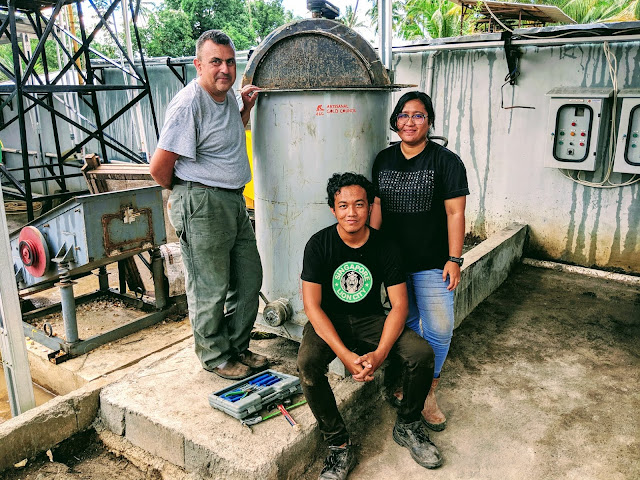Mercury Free Gold Processing
Using mercury amalgamation to separate gold particles from ore is not only dangerous to the health and environment of miners and their families but it is also inefficient. Recovery is an important aspect of efficiency in mining. It is a measurement of how much gold is split from the ore; how much gold goes to concentrate and how much goes to tailings.
In Cholito, Peru at our mercury free processing and training centre, the initial rate of recovery that miners were able to extract through mercury amalgamation was 30%-40%. This means almost half of their gold was lost to tailings! A waste of the resource at a great harm to the planet. (In comparison, most large scale gold mines maintain a recovery of over 98%.)
One of the most prominent roles of the AGC is to assist miners to improve their processing techniques and eliminate their use of mercury. The mercury free processing and training systems installed by the AGC are intuitive and easy to use since they are composed of technology the miners are already familiar with. They have improved crushing, milling, sluicing and a shaking table that separates gold from other minerals. And they can even improve their gold recovery by up to 40%.
 |
| AGC's mercury free processing and training system in Cholito, Peru |
One of the ways in which the AGC promotes a safer, more economical and less harmful ASGM sector worldwide is through better practices, and a key aspect of better practices in ASGM can be a gravimetric circuit. There are many types of gravimetric technologies that can be used to more safely, cleanly and efficiently separate gold particles from the ore. But particle size matters for efficiency. Through gravimetric technologies the high/low density (high relative weight) of gold is taken advantage of.
The traditional processing workflow employed by artisanal miners usually has poor grain size control yielding inadequate gold recovery and is both mercury and dust intensive, causing associated environmental and health issues for not only the miners actively involved in the processing, but members of non-participating surrounding communities as well. To reduce these negative effects, the AGC has developed and improved practices by introducing an alternate processing system with the following components:
1. Generator: For onsite production of electricity required to power the system.
2. Scrubber: Removal of clay material from ore by the action of water inside a rotating drum.
3. Jaw Crusher: Provides the initial grain size reduction of ore by impact energy between two steel plates, it usually delivers a gravel 4 to 8 times smaller than the size of the material fed into it.
4. Wet Pan Mill or Ball Mill: Further grain size reduction to ensure complete liberation of gold.
5. Screen: Grain-size control generally used after the milling stage. Its size selection depends on the grain size required for the best gold liberation.
6. Sluice,shaking table,spirals, jigs: Primary concentration of gold
7. Flotation: Secondary concentration of gold.
8. Smelting and Refining Kit: Production of gold ingots.
9. Tailings Ponds: Storage of mercury free tails and water recirculation.
 |
| A workflow option used by the AGC to process gold without the use of mercury. |
This system workflow eliminates the need to use mercury in processing while increasing the gold recovery through better and more controlled milling and mineral separation practices. One of the most important improvements to the AGC system is the addition of process control at several stages of the workflow. Primary concentration after the milling process is a key to gold recovery. The grinding control allows for more complete liberation of gold from other minerals in the ore, resulting in improved gold recovery.
In this general configuration the system is suitable for most ASM scenarios; however, the best workflow may vary slightly between sites depending on things such as mineralogy, size and distribution of gold particles in the ore, location of site, availability of water for processing, and technical skills of operators. Therefore, the adopted workflow is made site specific and optimized based on locally encountered conditions.



Comments
Post a Comment
The Artisanal Gold Council is a registered non-profit organization that improves the environmental and economic sustainability of artisanal and small scale gold mining communities.